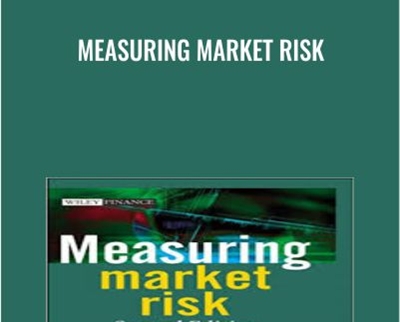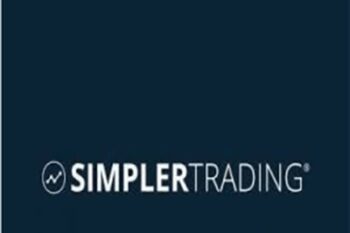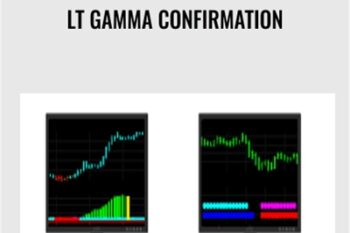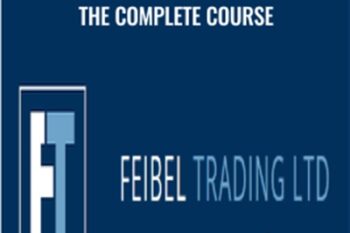Achieve more with the Measuring Market Risk – Kevin Dowd course, priced at just Original price was: $84.99.$21.00Current price is: $21.00. on GBESY.biz! Explore our extensive collection of over 60,000 downloadable courses in Forex and Trading. We offer professional, self-paced digital education at up to 80% off original rates. Start transforming your expertise now!
Salepage link: At HERE. Archive:
$84.99 $26 – Measuring Market Risk – Kevin Dowd
Description
Fully revised and restructured, Measuring Market Risk, Second Edition includes a new chapter on options risk management, as well as substantial new information on parametric risk, non-parametric measurements, and liquidity risks, more practical information to help with specific calculations, and new examples including Q&A’s and case studies.
Table of Contents
Preface to the Second Edition
Acknowledgments
- 1 The Rise of Value at Risk
- 1.1 The emergence of financial risk management
- 1.2 Market risk management
- 1.3 Risk management before VaR
- 1.4 Value at risk
Appendix 1: Types of Market Risk
- 2 Measures of Financial Risk
- 2.1 The Mean-Variance framework for measuring financial risk
- 2.2 Value at risk
- 2.3 Coherent risk measures
- 2.4 Conclusions
Appendix 1: Probability Functions
Appendix 2: Regulatory Uses of VaR
- 3 Estimating Market Risk Measures: An Introduction and Overview
- 3.1 Data
- 3.2 Estimating historical simulation VaR
- 3.3 Estimating parametric VaR
- 3.4 Estimating coherent risk measures
- 3.5 Estimating the standard errors of risk measure estimators
- 3.6 Overview
Appendix 1: Preliminary Data Analysis
Appendix 2: Numerical Integration Methods
- 4 Non-parametric Approaches
- 4.1 Compiling historical simulation data
- 4.2 Estimation of historical simulation VaR and ES
- 4.3 Estimating confidence intervals for historical simulation VaR and ES
- 4.4 Weighted historical simulation
- 4.5 Advantages and disadvantages of non-parametric methods
- 4.6 Conclusions
Appendix 1: Estimating Risk Measures with Order Statistics
Appendix 2: The Bootstrap
Appendix 3: Non-parametric Density Estimation
Appendix 4: Principal Components Analysis and Factor Analysis
- 5 Forecasting Volatilities, Covariances, and Correlations
- 5.1 Forecasting volatilities
- 5.2 Forecasting covariances and correlations
- 5.3 Forecasting covariance matrices
Appendix 1: Modelling Dependence: Correlations and Copulas
- 6 Parametric Approaches (I)
- 6.1 Conditional vs unconditional distributions
- 6.2 Normal VaR and ES
- 6.3 The t-distribution
- 6.4 The lognormal distribution
- 6.5 Miscellaneous parametric approaches
- 6.6 The multivariate normal variance-covariance approach
- 6.7 Non-normal variance–covariance approaches
- 6.8 Handling multivariate return distributions with copulas
- 6.9 Conclusions
Appendix 1: Forecasting longer-term Risk Measures
- 7 Parametric Approaches (II): Extreme Value
- 7.1 Generalised extreme-value theory
- 7.2 The peaks-over-threshold approach: the generalized Pareto distribution
- 7.3 Refinements to EV approaches
- 7.4 Conclusions
- 8 Monte Carlo Simulation Methods
- 8.1 Uses of monte CarloCarlo simulation
- 8.2 Monte carlo simulation with a single risk factor
- 8.3 Monte Carlo simulation with multiple risk factors
- 8.4 Variance-reduction methods
- 8.5 Advantages and disadvantages of Monte Carlo simulation
- 8.6 Conclusions
- 9 Applications of Stochastic Risk Measurement Methods
- 9.1 Selecting stochastic processes
- 9.2 Dealing with multivariate stochastic processes
- 9.3 Dynamic risks
- 9.4 Fixed-income risks
- 9.5 Credit-related risks
- 9.6 Insurance risks
- 9.7 Measuring pensions risks
- 9.8 Conclusions
- 10 Estimating Options Risk Measures
- 10.1 Analytical and algorithmic solutions m for options VaR
- 10.2 Simulation approaches
- 10.3 Delta–gamma and related approaches
- 10.4 Conclusions
- 11 Incremental and Component Risks
- 11.1 Incremental VaR
- 11.2 Component VaR
- 11.3 Decomposition of coherent risk measures
- 12 Mapping Positions to Risk Factors
- 12.1 Selecting core instruments
- 12.2 Mapping positions and VaR estimation
- 13 Stress Testing
- 13.1 Benefits and difficulties of stress testing
- 13.2 Scenario analysis
- 13.3 Mechanical stress testing
- 13.4 Conclusions
- 14 Estimating Liquidity Risks
- 14.1 Liquidity and liquidity risks
- 14.2 Estimating liquidity-adjusted VaR
- 14.3 Estimating liquidity at risk (LaR)
- 14.4 Estimating liquidity in crises
- 15 Backtesting Market Risk Models
- 15.1 Preliminary data issues
- 15.2 Backtests based on frequency tests
- 15.3 Backtests based on tests of distribution equality
- 15.4 Comparing alternative models
- 15.5 Backtesting with alternative positions and data
- 15.6 Assessing the precision of backtest results
- 15.7 Summary and conclusions
Appendix 1: Testing Whether Two Distributions are Different
- 16 Model Risk
- 16.1 Models and model risk
- 16.2 Sources of model risk
- 16.3 Quantifying model risk
- 16.4 Managing model risk
- 16.5 Conclusions
Bibliography
Author Index
Subject Index
$84.99 $26 – Measuring Market Risk – Kevin Dowd
Invest in endless knowledge with the Measuring Market Risk – Kevin Dowd course at GBESY.biz! Gain lifetime access to premium digital content designed to fuel your professional and personal growth.
- Lifetime Access: Unrestricted, permanent access to your purchased courses.
- Unbeatable Value: Save significantly with prices up to 80% less than direct purchases.
- Protected Payments: Complete your transactions securely.
- Empowering Skills: Learn practical, in-demand skills for immediate application.
- Immediate Download: Access your course content instantly after purchase.
- Any Device, Anywhere: Study on your preferred device with full flexibility.
Discover your next opportunity with GBESY.biz!
![GBesy [GB] GBesy [GB]](https://gbesy.biz/wp-content/uploads/2023/05/gbesy-Logo-full-100.png)
![GBesy [GB] GBesy [GB]](https://www.gbesy.com/wp-content/uploads/2023/05/gbesy-Logo-full-100.png)



 Purchase this course you will earn
Purchase this course you will earn 





Reviews
There are no reviews yet.